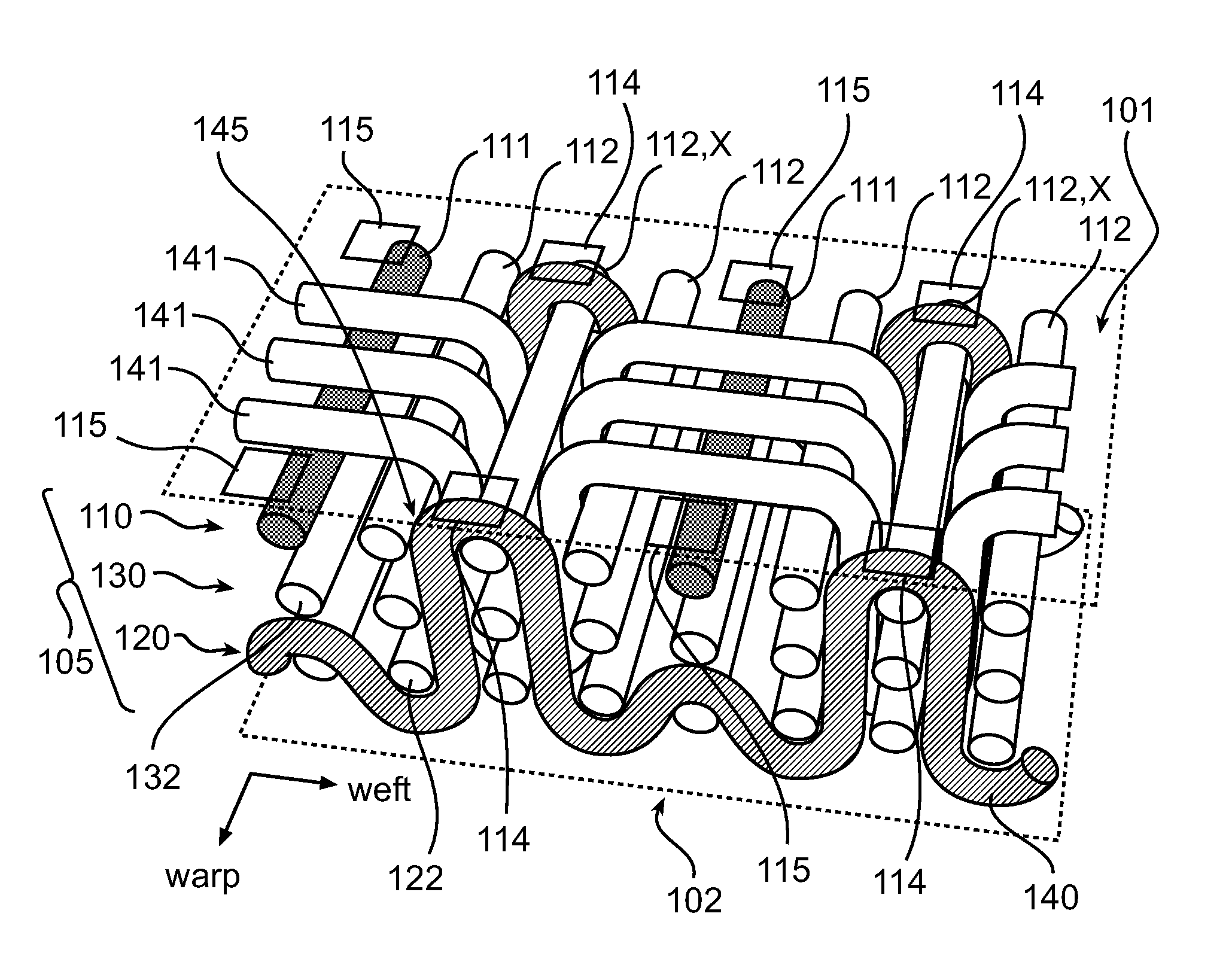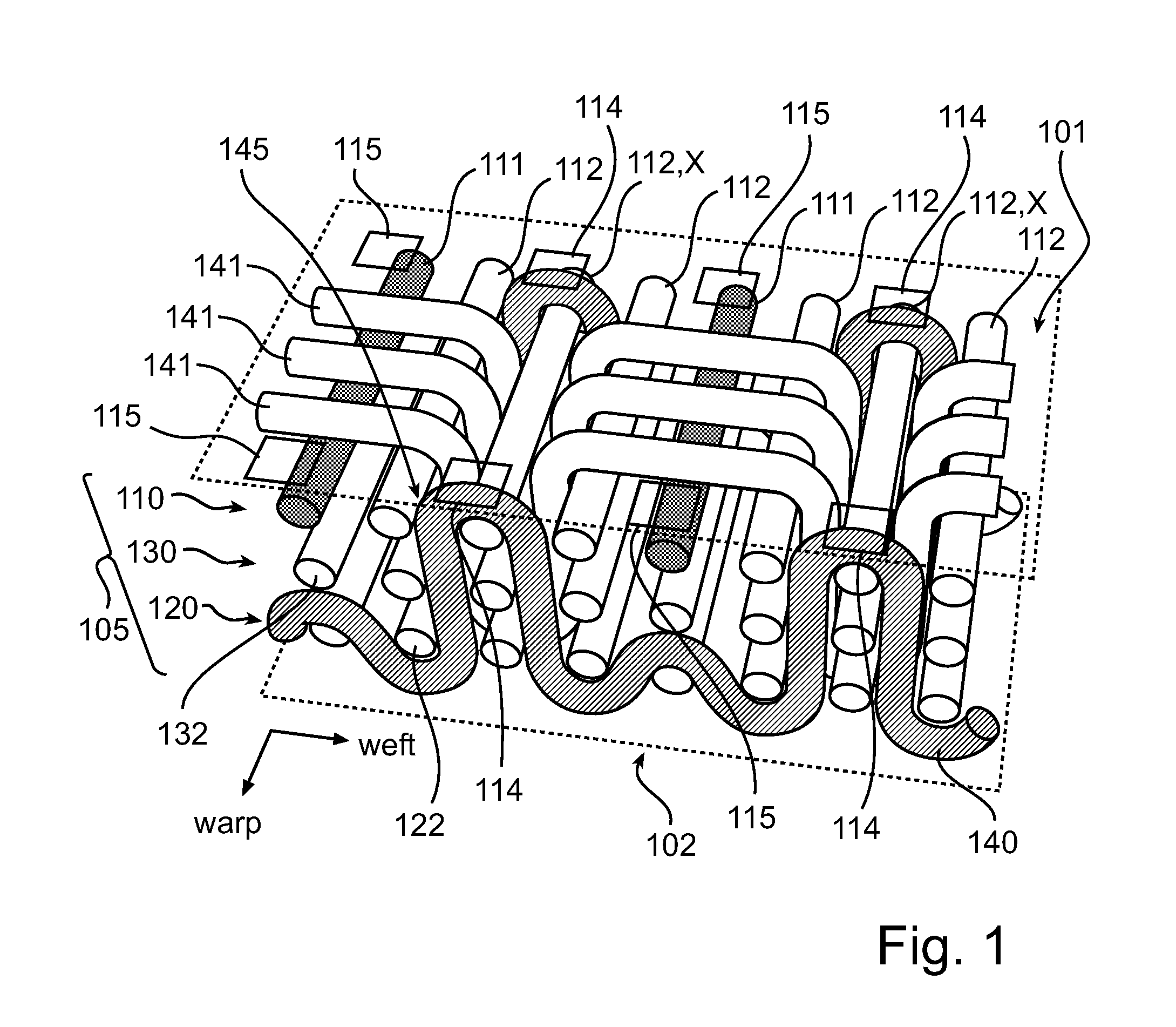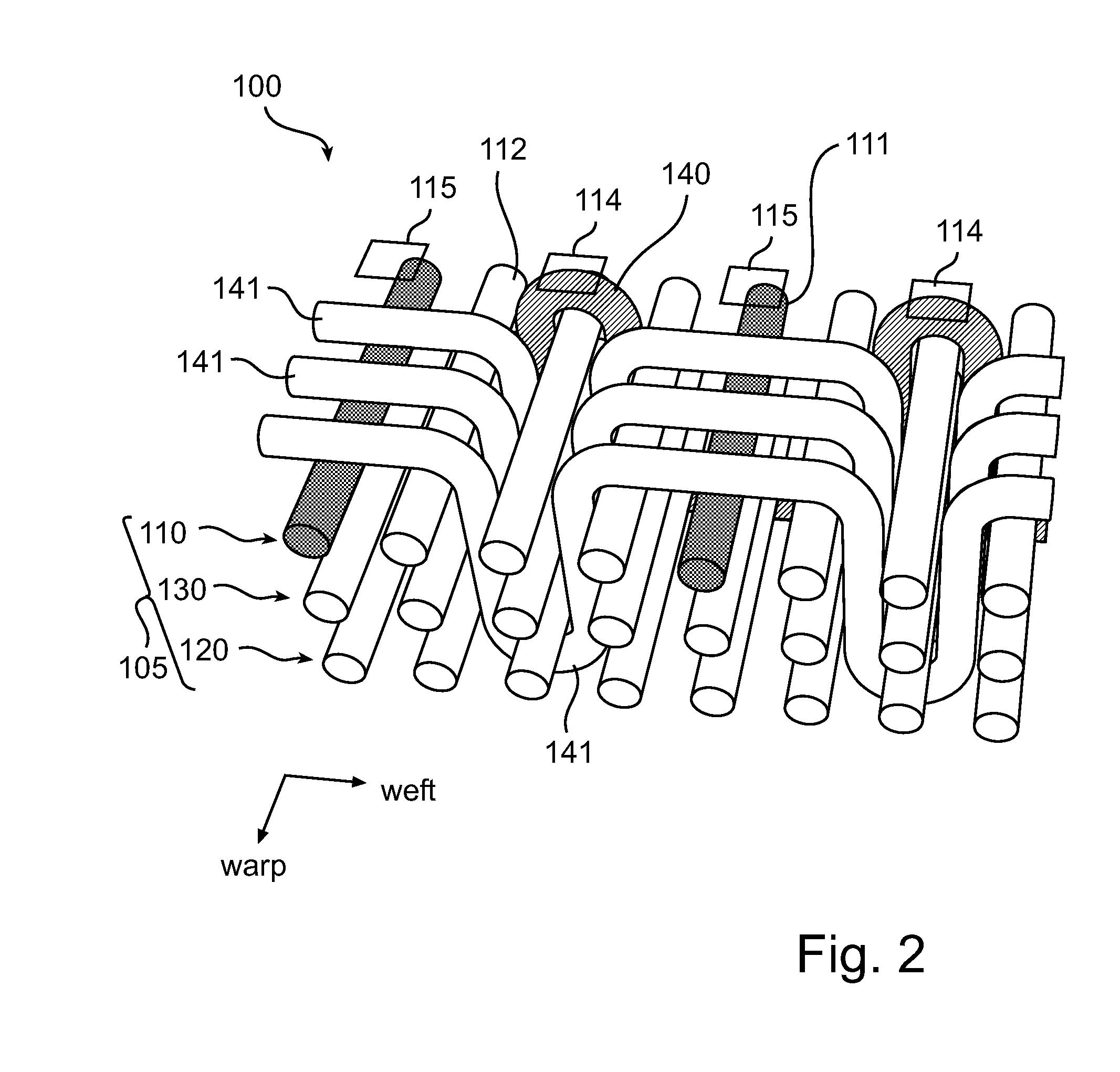Multi-layer woven fabric display
a multi-layer, textile technology, applied in the field of textiles, can solve the problems of color display of textiles, short circuits, etc., and achieve the effects of reducing the risk of short circuit, preventing electrically conductive yarns, and facilitating the connection of electronic components
- Summary
- Abstract
- Description
- Claims
- Application Information
AI Technical Summary
Benefits of technology
Problems solved by technology
Method used
Image
Examples
Embodiment Construction
[0031]With reference to FIG. 1, a first embodiment of the present invention will be described.
[0032]FIG. 1 shows a cross-sectional view of a textile 100 illustrating the weaving of an electrically conductive weft yarn 140 in a multilayer warp 105. The multilayer warp 105 of the textile (or fabric) 100 comprises a first layer 110, a second layer 120 and a third layer 130 arranged between the first layer 110 and the second layer 120. The yarns 111 and 112 of the first, second and third layers 110, 120 and 130 are arranged along a so-called warp direction, thereby defining the multilayer warp 105. The first layer 110 comprises electrically conductive yarns 111 electrically isolated from each other by at least one electrically insulating yarn 112. In the present embodiment, two adjacent electrically conductive warp yarns 111 of the first layer 110 are electrically separated by three electrically insulating warp yarns 112. The second and third layers 120 and 130 comprise electrically ins...
PUM
| Property | Measurement | Unit |
|---|---|---|
| Electrical conductivity | aaaaa | aaaaa |
| Structure | aaaaa | aaaaa |
| Flexibility | aaaaa | aaaaa |
Abstract
Description
Claims
Application Information
 Login to View More
Login to View More - R&D
- Intellectual Property
- Life Sciences
- Materials
- Tech Scout
- Unparalleled Data Quality
- Higher Quality Content
- 60% Fewer Hallucinations
Browse by: Latest US Patents, China's latest patents, Technical Efficacy Thesaurus, Application Domain, Technology Topic, Popular Technical Reports.
© 2025 PatSnap. All rights reserved.Legal|Privacy policy|Modern Slavery Act Transparency Statement|Sitemap|About US| Contact US: help@patsnap.com



